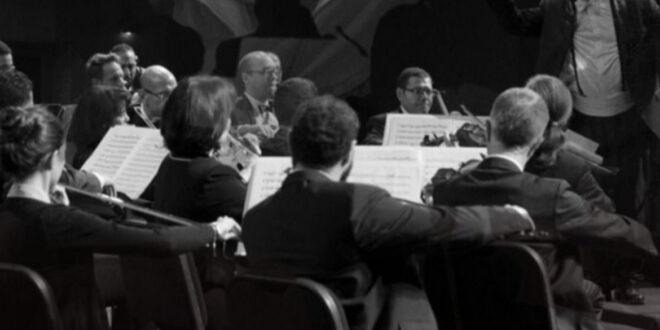The Museum of Civilization celebrates the 200th anniversary of Beethoven’s Ninth Symphony
Celebration of Beethoven’s Ninth Symphony
Dr. attended. Hossam Badrawi today held a wonderful concert at the National Museum of Civilization in celebration of the Ninth Symphony by the musician Ludwig van Beethoven, who was and still is one of the musical geniuses in the world throughout the ages and the most creative and influential, and despite his hearing loss, he produced pieces and pieces that are immortal in the human conscience, including the Ninth Symphony. It has been a year since it was shown for the first time in May 200 years ago.
The Cairo Symphony Orchestra, led by Maestro Ahmed Al-Saidi, was impressive. The soprano Mona Rafla, Julie Fayez, the tenor Amr Medhat, the bass baritone and the chorus were creative with the Cairo Symphony team.
The celebration was held under the title “Beethoven’s Ninth Symphony, Ode to Joy,” and comes in cooperation between the National Museum of Civilization Authority and the European Union delegation in Egypt, in a concert by the Egyptian Philharmonic Orchestra led by Ahmed Al-Saidi, in which Egyptian history and civilizations embrace the magic of Western classical music in a unique artistic and musical evening. .
The celebration, although unique and for the first time at the National Museum of Civilization, is part of the museum’s approach not only in holding activities and events that highlight Egyptian culture, civilization, and Egyptian heritage, but also in highlighting other civilizations, provided that there is some kind of connection or common relationship between them and Egyptian civilization.
Dr. Ahmed Ghoneim, CEO of the National Museum of Egyptian Civilization, explains that the museum has organized many events with the embassies of several countries, which witness a kind of rapprochement between them and Egyptian civilization, such as films about Egypt directed in foreign countries, or an exhibition with Mexico that displays cultural aspects. In the two civilizations, Italy, or otherwise.
He added to “Icona”: The symphony is purely European, but there are some studies that say that this symphony has Eastern roots, and therefore has a relationship with Egypt. The second thing is that the one who will perform is the Cairo Symphony Orchestra, explaining that the Cairo Orchestra will play Beethoven’s melody, which has Historical significance, it is the most played piece of classical music in the world, and it is also the most famous piece, and the most referenced piece.
He added that the National Museum of Civilization, as a representative of Egypt, confirms that it is open to all civilizations. It is not limited to presenting Egyptian civilization with its extended history, but is open to other civilizations, as long as they are appropriate, and the museum is happy to present them. He explained that the Ninth Symphony is approximately 59 minutes long, from which it was taken. Part of the European anthem.
He points out that the symphony has a historical and humanitarian significance, as Beethoven had lost his hearing, yet he led the orchestra as if he was hearing him, and the audience was amazed by this, in an amazing way, as it has a human significance, explaining that some of Beethoven’s musical pieces were presented and played in the Egyptian Opera House, but this The event will be for the first time at the National Museum of Civilization, and will be held in the museum’s theater under the leadership of the Cairo Symphony Orchestra.
Beethoven’s Ninth Symphony was performed for the first time on May 7, 1824 on the stage of the “Carinthian Corridor” theater in the Austrian capital, Vienna. This was Beethoven’s first appearance on stage in 12 years, and at that time he had lost his hearing, as he was flipping through the pages of his sheet music at a faster speed than the orchestra. He could not hear it, and since then, despite the passage of two centuries, it has become the most popular classical piece. It was the first example of a major composer using the voices of singers in a symphonic work, so the choir of singers and the solo appear in the last part of it, from the words of the poem Ode to Joy, by the German poet Friedrich Schiller. In 1785, which the poet re-edited in 1803 and added parts to it, in which he says: “For all people are brothers, shade them with your wings, O supreme joy.”
Beethoven took the poem and added some additions to it, and his genius and dazzling musical composition gave the poem a wide-ranging legacy and influence. The Ninth Symphony came out in an unprecedented way, making the audience stand up and applaud enthusiastically for him. They saluted him by applauding five times and were throwing their hats at him so that he could see them because he did not Their applause could not be heard, and from the “Ode to Joy” piece, it was cut to become the official anthem of the European Union.

 Dr. Hossam Badrawi Official Website
Dr. Hossam Badrawi Official Website

